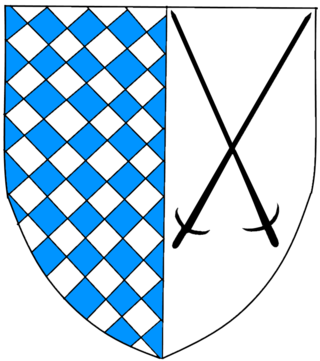
The 13th Panzer Division was a unit of the German Army during World War II, established in 1940.

The 16th Infantry Division of the German Army was formed in 1934. On 26 August 1939 the division was mobilized for the invasion of Poland (1939). It participated in the Battle of France in August 1940. The division was then split, resulting in two independent units: The 16th Panzer Division and the 16th Motorized Infantry Division. Then later, from 1944 onward, combined with other non 16th elements, was known as the 116th Panzer Division.

Operation Southeast Croatia was a large-scale German-led counter-insurgency operation conducted in the southeastern parts of the Independent State of Croatia during World War II. It was the first of two German-led operations targeting mainly Yugoslav Partisans in eastern Bosnia between 15 January and 4 February 1942. Several days after the conclusion of Operation Southeast Croatia, a follow-up operation known as Operation Ozren was carried out between the Bosna and Spreča rivers. Both operations also involved Croatian Home Guard and Italian troops and are associated with what is known as the Second Enemy Offensive in post-war Yugoslav historiography. The Second Enemy Offensive forms part of the Seven Enemy Offensives framework in Yugoslav historiography.

The Territory of the Military Commander in Serbia was the area of the Kingdom of Yugoslavia that was placed under a military government of occupation by the Wehrmacht following the invasion, occupation and dismantling of Yugoslavia in April 1941. The territory included only most of modern central Serbia, with the addition of the northern part of Kosovo, and the Banat. This territory was the only area of partitioned Yugoslavia in which the German occupants established a military government. This was due to the key rail and the Danube transport routes that passed through it, and its valuable resources, particularly non-ferrous metals. On 22 April 1941, the territory was placed under the supreme authority of the German military commander in Serbia, with the day-to-day administration of the territory under the control of the chief of the military administration staff. The lines of command and control in the occupied territory were never unified, and were made more complex by the appointment of direct representatives of senior Nazi figures such as Reichsführer-SS Heinrich Himmler, Reichsmarschall Hermann Göring, and Reichsminister Joachim von Ribbentrop. The Germans used Bulgarian troops to assist in the occupation, but they were at all times under German control. Sources variously describe the territory as a puppet state, a protectorate, a "special administrative province", or describe it as having a puppet government. The military commander in Serbia had very limited German garrison troops and police detachments to maintain order, but could request assistance from a corps of three divisions of poorly-equipped occupation troops.
281st Security Division was a rear-security division in the Wehrmacht of Nazi Germany. Established in 1941, the unit was deployed in German-occupied areas of the Soviet Union, in the Army Group North Rear Area. The unit was converted to an infantry division in 1945, while stationed in Courland.
The 4th Luftwaffe Field Division was an infantry division of the Luftwaffe branch of the Wehrmacht that fought in World War II. It was formed using surplus ground crew of the Luftwaffe and served on the Eastern Front from late 1942 to June 1944 when it was destroyed during Operation Bagration.
The 6th Luftwaffe Field Division was an infantry division of the Luftwaffe branch of the Wehrmacht that fought in World War II. It was formed using surplus ground crew of the Luftwaffe and served on the Eastern Front from late 1942 to June 1944 when it was destroyed during Operation Bagration.

The 14th Panzer Division was an armoured division in the German Army during World War II. It was created in 1940 by the conversion of the 4th Infantry Division.
The 101st Jäger Division was a light infantry Division of the German Army in World War II. It was formed in July 1942 by the redesignation of the 101st (Light) Infantry Division, which was itself formed in December 1940. The Walloon Legion was briefly attached to this division from December 1941 to January 1942. The Division took part in the Battle of Kharkov, the Battle of the Caucasus, and the retreat into the Kuban, where it suffered heavy losses fighting both the Red Army and partisans. The division was then involved in the battles in the Kuban bridgehead before being evacuated. The 101st was subsequently transferred to the lower Dnieper River in late 1943. It was part of the 1st Panzer Army that was surrounded in March 1944; it formed the rear guard for the XLVI Panzer Corps during the breakout of the Kamenets-Podolsky pocket. The division then retreated across Ukraine. In October 1944, it was moved to Slovakia and took part in the Battle of the Dukla Pass.

Eduard Crasemann was a German General der Artillerie in the Wehrmacht and convicted war criminal who commanded several Panzer divisions during World War II.
Eduard Hauser was a German general in the Wehrmacht during World War II who commanded the 13th Panzer Division. He was a recipient of the Knight's Cross of the Iron Cross with Oak Leaves.

The 31st Infantry Division was a German infantry division of the Army during World War II. It participated in the invasion of Poland in 1939 then the invasion of France and the Low Countries in 1940. As part of Panzergruppe 2. of Army Group Centre, it was involved in the invasion of the Soviet Union in June 1941. After hard fighting throughout 1941 and 1942 it joined the 9th Army and fought in the Battle of Kursk in July and August 1943. Along with the rest of the 9th Army, the division conducted a fighting withdrawal for the remainder of 1943, during which it sustained heavy casualties. In the early stages of the Soviet Operation Bagration of June to August 1944, the 31st Infantry Division was destroyed, a fate which subsequently befell most of Army Group Centre. The division was officially disbanded on 18 July 1944.

Hans von Boineburg-Lengsfeld was a German general in the Wehrmacht of Nazi Germany who commanded the 4th and 23rd Panzer Divisions during World War II. He was also a recipient of the Knight's Cross of the Iron Cross of Nazi Germany.

The 369th (Croatian) Infantry Division was a legionary division of the German Army (Wehrmacht) during World War II.

The 338th Infantry Division was a division of the German Army in World War II.

The 373rd (Croatian) Infantry Division was a division of the German Army during World War II. It was formed in June 1943 using a brigade from the Home Guard of the Independent State of Croatia with the addition of a German cadre. The division was commanded by Germans down to battalion and even company level in nearly all cases, and was commonly referred to as a "legionnaire division". Originally formed with the intention of service on the Eastern Front, it was used instead for anti-Partisan operations in the territory of the NDH until the end of the war. It fought mainly in the western areas of the NDH, and was involved in the attempt to kill or capture the leader of the Partisans, Josip Broz Tito, in May 1944. Severely depleted by desertion, the division withdrew towards the Reich border in the early months of 1945, eventually surrendering to the Partisans on 10 May 1945 near Brežice in modern-day Slovenia.

The 387th Infantry Division was an infantry division of the German Army during the Second World War, active from 1942 to 1944. It saw active service on the Eastern Front and was destroyed in fighting in Romania in August 1944.

The 376th Infantry Division was an infantry division of the German Army during World War II, active from 1942 to 1944 in two separate instances.

The attack on Šabac was attack of the united rebel forces of the Chetniks, forces of the Communist Party of Yugoslavia and Pećanac Chetniks against German forces garrisoned in Šabac in Axis-occupied Yugoslavia in period between 21 and 26 September 1941, during the Uprising in Serbia.

The Mačva operation or Cleaning Up the Sava Crescent was a German military operation during the uprising in the German-occupied territory of Serbia. This operation was in some contemporary German documents and in some works was referred to as operation Cleansing of Mačva.














